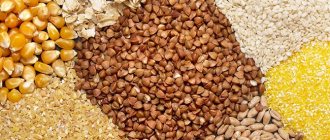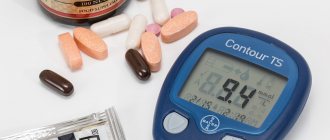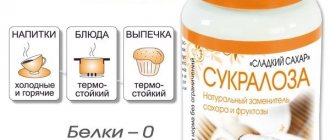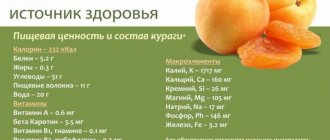In recent years, doctors have noted an increase in the incidence of diabetes. This is due to the fact that the vast majority of people, especially in developed cities, lead an unhealthy lifestyle, they have very little physical activity, and their diet consists of starchy, fatty foods with a lot of refined sugar. The basis of therapy for this disease is strict adherence to a diet containing low-carbohydrate foods. At first glance, it seems that such a diet is monotonous, but in fact, there are quite a lot of permitted foods, so much so that sometimes the doctor simply cannot tell you about everything at the appointment. Then the question arises, is it possible to drink tomato juice if you have type 2 diabetes?
Tomatoes in a diabetic's diet
What is the benefit
In fact, the vast majority of juices are prohibited for diabetics. Fruit drinks, even the most natural and freshly squeezed ones, are contraindicated due to their high glycemic index. Endocrinologists warn that even a small amount of such a drink can provoke a sharp increase in blood glucose levels by almost 5 mmol/l. At the same time, vegetable juices, especially from tomatoes, are allowed and even recommended for consumption. In addition, they are extremely rich in vitamins and microelements, which contribute to the overall strengthening and healing of the patient’s body. Approximate composition of tomato drink:
- retinol;
- B vitamins, in particular folic acid;
- tocopherol;
- a nicotinic acid;
- vitamin H (aka biotin);
- carotenoids;
- ascorbic acid;
- potassium;
- calcium;
- phosphorus;
- magnesium;
- zinc;
- iodine;
- iron.
It is important to know! Tomatoes are also high in purines, which are precursors of uric acid. Its excess can lead to exacerbation of gout, kidney stones and gall bladder stones.
Kidney stone formation
Biological and chemical theses on tomatoes
The Edible Tomato grows in the form of a herbaceous annual plant belonging to the Solanaceae family. Its fruit is called a berry with a sweet and sour taste. Ground shoots have a specific odor. South America is considered the birthplace of tomatoes. Plants there are still found in the wild, including perennials. Now it is the main vegetable crop in Russia. Thousands of breeding varieties have been created for cultivation in greenhouses and open ground.
Tomatoes have the perfect combination of acids and carbohydrates. Garden crops are rich in water- and fat-soluble vitamins. The first include group B (pyridoxine, thiamine, cyanocobalamin), ascorbic acid, niacin. The second group includes tocopherol and carotenes. Provitamin retinol (vitamin A) is present in tomatoes in an amount of 1 mg%. This amount is several times greater than that contained in butter. It has been proven that red varieties have more nutrients than pink or yellow ones. It is rare that a fruit has such a clearly balanced composition.
The value of a tomato vegetable as a product lies not only in its juicy “vitamin bouquet”. In addition to the main chemical compounds, including carbohydrates, proteins, fiber, tomato drink contains citric and malic acids, metals, among which potassium predominates.
Well-absorbed iron salts play an important role in cells during hematopoietic processes. Acids activate digestion in the body. Tomato juice for diabetes normalizes impaired metabolic reactions. In particular, the cholesterol level in the blood depends on organic folic acid.
Effect on the body
It is important to note that due to the increased content of carotenoids, vitamins E and C, the juice has a powerful antioxidant effect and is able to eliminate the effects of free radical oxidative reactions in tissues. This prevents premature aging and the formation of malignant tumors.
Eating tomatoes reduces the risk of a decrease in hemoglobin in red blood cells and the occurrence of anemia.
The pectins and enzymes included in the composition help normalize digestion and remove the harmful fraction of cholesterol, thus preventing the growth of atherosclerotic cholesterol plaques inside the blood vessels.
A higher rate of metabolic processes ensures rapid utilization of newly introduced glucose into the blood, allowing for better control of diabetes of any degree, even that which occurs during pregnancy and is called gestational.
B vitamins strengthen the nervous system, normalize the passage of nerve impulses through the peripheral nerve plexuses and help neutralize the manifestations of neuropathy, which very often occurs in diabetics.
Ascorbic acid increases the body's resistance to viral and bacterial infections.
Vitamin A has a beneficial effect on the eyes, as a result of which visual acuity increases and the symptoms of retinopathy decrease.
Cooking method
There are many ways to make a healthy drink, but for diabetics the number of recipes is limited.
Wash and cut tomatoes (1.5 kg) into several parts, then pass through a meat grinder or juicer. The result is 1 liter of ready-to-drink freshly squeezed juice.
You can also prepare the drink for longer storage without resorting to additional ingredients. The juice is prepared from slightly overripe tomatoes with a minimal amount of seeds. Tomatoes must be pureed using a meat grinder or juicer. Pour the resulting liquid into an enamel pan and boil for 2 minutes. over high heat. Next, the drink is boiled over medium heat for 20 minutes. Immediately after removal from the stove, the juice is poured into sterilized jars and closed with lids.
There is a technique for preparing juice containing pulp. To do this, wash the tomatoes, add water and place them on the stove until they reach a soft state, then wipe. The resulting mass is heated to 85ºС and poured into glass containers. Juice in cans is sterilized in bulk containers for 60 minutes. Next, the jars are rolled up and cooled.
As a rule, the drink is added to vegetable stew using low GI vegetables:
- eggplants;
- zucchini;
- squash;
- onions;
- cabbage (any varieties): broccoli, Brussels sprouts, cauliflower, white and red cabbage;
- legumes: beans, peas, lentils;
- mushrooms: champignons, oyster mushrooms, porcini mushrooms, boletus mushrooms;
- olives and olives.
Carrots and beets should not be used in stews. These fresh vegetables are recommended for diabetes, but heat treatment raises their glycemic index to 85 units.
Dishes are prepared and combined based on the patient’s personal taste, taking into account dietary requirements and proper processing:
- stewing in water;
- baking;
- boiling;
- by steaming, in the microwave or in a slow cooker.
Tomatoes are a common vegetable plant that you can grow yourself or purchase at a low price. Do not neglect the consumption of tomato juice, which not only has good taste, but also saturates the weakened body of a diabetic with numerous essential substances.
How to take for diabetics
In order to get the maximum benefit from the drink, you need to use it correctly and follow some recommendations. The permitted dose of juice for diabetics is about 600-700 milliliters. It is better to drink it 30 minutes before meals. Naturally, the health benefits are much higher for fresh juice that has just been squeezed from ripe seasonal tomatoes. All kinds of heat treatment methods, such as boiling, stewing, and the like, lead to the destruction of useful substances.
To prevent unwanted reactions, it is better to introduce juice into the diet gradually. It is recommended to start with 50 milliliters of fresh juice three times a day and, in about 3-5 days, increase this figure to 200-250 milliliters three times a day. During adaptation, it is better to drink juice in the first half of the day in order to accurately track the relationship between the occurrence of any ailment and the intake of tomato drink. The risks of unwanted effects are higher in people with all kinds of diseases of the gastrointestinal tract, for example, peptic ulcers of the stomach and duodenum, gastritis, and chronic inflammatory processes of the intestines.
Making juice using a juicer
Features of drinking the drink
Incorrect use of tomato juice will negate its beneficial value for the body and literally cause damage to health. Cells of internal organs (liver, kidneys) are capable of accumulating compounds in the form of stones, with the chemical support of components from tomatoes.
It is forbidden to drink tomato juice:
- in the morning, before meals.
- with a weak intestine, prone to disorders;
- during the period of feeding the baby;
- in infancy.
According to dietary canons, tomatoes are not combined with protein dishes made from dairy products and fish. Its frequent use with starch (from potatoes) and sour bread is not recommended.
To accelerate growth and subsequent long-term storage, some manufacturers treat fruits with special reagents. Such tomatoes are not suitable for preparing a diet drink. Using low quality berries for juice reduces the nutritional value of the food product.
For diabetics seeking to adjust their body weight, the drink helps suppress appetite
Fresh, canned or store-bought
The most undesirable type of tomato juice for any type of diabetes is store-bought. In a purchased product, the concentrations of sugar, preservatives and other chemical impurities are often high, while the content of useful substances, on the contrary, is very low. The use of such a product can cause real harm, and therefore is virtually meaningless. Even canned juice, which can be prepared at home, will provide more benefits, despite the reduced amount of vitamins and minerals in it, compared to freshly squeezed juice. To prepare the drink, you need to select a bag of ripe tomatoes and grind them using a blender, meat grinder or juicer.
Canned tomato juice
Recommendations for consuming tomato juice for diabetes
- It is optimal to drink tomato juice 30-60 minutes before meals. It is not advisable to drink it during meals, since it does not combine with most foods (primarily protein foods) and can be harmful.
- The juice should not be heated. This destroys most of the beneficial substances.
- Freshly squeezed juice has the greatest benefits, since the highest concentration of nutrients remains in it for no more than four hours.
It is also important not to forget about such moments
- Tomato juice enhances the body's response to insulin, as it can lower blood sugar levels. If you drink the drink regularly, then after about 7 days the result will stabilize, thus, the sugar level will decrease, and the general physical condition of the patient will also improve.
- Diabetics know how important water is for the pancreas. So, tomato juice is able to restore water and electrolyte balance, which, among other things, will help improve metabolic processes.
- Containing antioxidants, tomatoes can cleanse the body of harmful substances. This also affects the speed of metabolic processes.
- Tomato juice will help prevent the development of vitamin deficiency, as it is a storehouse of organic acids, vitamins and minerals.
Glycemic index of tomato drink and daily value
The higher the pure sugar content in food, the more pancreatic hormone insulin is required to process it. Tomato juice is not sweet and contains a minimal amount of sucrose, which requires very little insulin to be absorbed. The energy value of juice is approximately 20 kcal per 100 milliliters of product. There are no fats at all, there is 1 gram of protein and up to 4 grams of carbohydrates, and its glycemic index is very low, approximately 15 units, which is absolutely acceptable for people with diabetes.
This indicator is an index that reflects the rate of absorption of carbohydrates from food. The higher the index value, the more pronounced the daily fluctuations in glucose, and this is absolutely unacceptable for diabetes. Diabetic products have a glycemic index strictly no higher than 50 units. All of them are displayed in special tables that endocrinologists use when preparing a special diet. Regular consumption of food with a high index, above 50, leads to disruption of metabolic processes, provokes a constant feeling of hunger and contributes to obesity.
Note! 100 milliliters of freshly squeezed drink made according to home recipes contains about 3-4 grams of sugar. In industrially produced juice, which can be purchased in stores, the concentration of sugar can be an order of magnitude higher, so before drinking you need to read the information about the composition indicated on the packaging.
The attending physician will ultimately decide whether or not to drink the juice. The specialist will also recommend the permissible amount of juice, based on the individual characteristics of each patient. We can definitely say that such a drink, if properly prepared and consumed, will bring a lot of benefits.
Video on the topic of the article:
Interesting:
- Is it possible to drink birch sap if diagnosed with type 2 diabetes mellitus, composition, mechanism of action of individual components, rules of use and contraindications
- Is it possible to drink a drink made from kombucha with diabetes, composition, benefits, potential harm, rules of use and contraindications
- What are the benefits of kefir for diabetes, its characteristics and possible contraindications for diabetics
- Drinking coffee if diagnosed with type 2 diabetes: is it possible or not?
- Pomegranate juice when diagnosed with type 2 diabetes: two ways to use it?
- Are there benefits or harms from eating potatoes for type 2 diabetes? Can it be included in a diabetic’s diet or not?
- Is it possible or not to drink milk and other fermented milk products if you are diagnosed with type 2 diabetes?
Contraindications
Many food products have contraindications and this one was no exception. First of all, it can cause harm to people with gastrointestinal problems, despite the fact that it normalizes its functioning. Due to the acid included in the composition, the stomach and pancreas can be injured. Perhaps the tomatoes themselves, consumed without the skin, will cause less harm.
It is also not recommended to drink if you have any illness:
- pancreatitis;
- duodenal ulcer;
- kidney diseases;
- colitis;
- intestinal fistula;
- gout;
- cholelithiasis.
Use with caution for herpetic diseases, ulcers, thrush or cracks in the oral mucosa. Also contraindicated is children under 2 years of age. After two, drinking juice is allowed, but in small quantities. To avoid digestive problems, it is best to choose special homogenized juice for babies.
Attention! To avoid problems, you should listen to your body and navigate your internal state. If you experience discomfort in the stomach, it is better to stop using the product.
Fruit and berry juices
Pomegranate juice
The drink is allowed to be consumed every day, but the daily dose is small. For an adult diabetic it is 70 ml; doctors recommend diluting this amount with 100-150 ml of cool, clean water.
Despite the high sugar content in pomegranate drink, if the concentration of glucose in the blood is too high, the juice can reduce it if you drink it regularly. Systematic medicinal consumption involves taking 50 drops of medicine diluted with 100 ml of liquid every morning.
Note! Freshly squeezed pomegranate juice is strictly prohibited for people suffering from ulcers, gastritis, enterocolitis with gastrointestinal hyperacidity.
Citrus juices
In their fresh form, they form an essential part of the diabetic diet due to their low calorie and GI content, as well as their immunomodulatory and nutritional effects. The situation with juices made from them is different - they contain too much sugar.
You can forget about the orange version. Grapefruit and lemon juices are allowed: they contain only 1 XE per glass, a lot of useful substances and some quickly absorbed carbohydrates. But they, especially the second one, should be diluted with water to avoid stomach problems, and add natural sugar substitutes - stevia or fructose.
Blueberry juice
Reduces the activity of inflammatory processes, combats the decline in visual acuity, improves skin condition and memory ability. For diabetic patients, it is recommended as an assistant in the fight against kidney failure.
Harm and how to avoid it
Only homemade juice is useful, but some people buy tomatoes in the store and prepare a healing drink from them. Vegetables for tomato juice are selected only from farms where minimal pesticides and chemicals were used.
Cherry tomatoes accumulate the least harmful substances. These small tomatoes are healthier than their large relatives. The amount of vitamins C, B and PP in babies is twice as high.
But the healthiest juice becomes dangerous in the following situations:
Vegetable juices
Drinking carrot juice
Vegetable drink:
- Contains more than 20 macro- and microelements, a lot of carotene.
- Has a pronounced antioxidant effect.
- Helps in treating heart diseases and maintaining its quality work.
- Removes excess cholesterol from the blood.
- Good for vision and dermis.
Potato juice
- Replenishes reserves of potassium, magnesium, phosphorus, improves impaired metabolism, prevents skin diseases, and normalizes abnormal blood pressure.
- Removes excess sugar without allowing sudden spikes.
- Accelerates the resorption of wounds.
- Has anti-inflammatory, antispasmodic, strengthening effect.
Cabbage juice
The healing effect of the drink relieves inflammation and wounds located both on the skin and on the internal integuments of the body. Therefore, even patients suffering from stomach problems are allowed to take it; moreover, the product is recommended for them to reduce pain and accelerate the process of regeneration of damaged tissues.
The ability to eliminate inflammation makes it possible to use cabbage as a means of fighting infections, viruses and colds.
The liquid is especially useful for diabetics in that it alleviates skin ailments that often develop with diabetes.
Cucumber
Combined with carrot to improve taste and medicinal effects. It is a gentle cleanser and diuretic.











